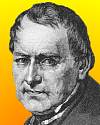
On 26 Apr 1774, Leopold von Buch was born, the German geologist, paleontologist and geographer noted for finding flaws in Abraham G. Werner’s hypothesis that rocks come from aqueous origins.
He was profiled by the venerable geologist Sir Archibald Geikie, in The Founders of Geology (1897), who described him as the most illustrious geologist that Germany has produced.
In this excerpt you can learn how Leopold von Buch, one of Werner’s most distinguished pupils, came to change from following his master's Neptunist views to become an advocate of Vulcanism.
On 26 Apr 1884, the New York Times reported that “sending mails by electricity” was to be investigated by the Post Office Committee of the U.S. House, by providing for contracts with an existing telegraph company. The proposal was that since carriage of letters by steam locomotives was already done by contract, the delivery of mails by electricity seemed analagous.
Now that e-mail has reduced snail-mail and troubles the income of the U.S. Postal Service, you may wish to read about the opportunity for Mails by Electricity that was presented more than a century ago.

On 26 Apr 1986 in Pripet, Russia, the Chernobyl nuclear plant exploded in the world’s worst civil nuclear catastrophe. The cloud of radioactive dust spread over Europe.
Today's book pick is: Wormwood Forest: A Natural History of Chernobyl, by Mary Mycio. The author toured the exclusion zone around the damaged plant and found that after two decades, the area deserted by humans has become Europe’s largest wildlife sanctuary. It is a flourishing—at times unearthly—wilderness teeming with large animals and a variety of birds, many of them members of rare and endangered species. Yet the habitat, the plants and the creatures are all radioactive. The facts are at once beautiful and horrible, and the author tells a unique story of science, surprise and suspense.
It is available from Amazon, typically about New from $38.55. Used from $8.75. (As of earlier time of writing - subject to change.)
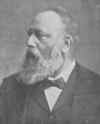 | It is a most gratifying sign of the rapid progress of our time that our best text-books become antiquated so quickly. |
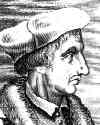 | Anatomy is to physiology as geography is to history; it describes the theatre of events. |
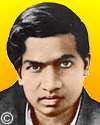 | Replying to G. H. Hardy’s suggestion that the number of a taxi (1729) was “dull”: No, it is a very interesting number; it is the smallest number expressible as a sum of two cubes in two different ways, the two ways being 1³ + 12³ and 9³ + 10³. |
| Before you look at today's web page, see if you can answer some of these questions about the events that happened on this day. Some of the names are very familiar. Others will likely stump you. Tickle your curiosity with these questions, then check your answers on today's web page. | |
| Births | |
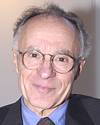 | Arno Penzias is a German-American astrophysicist, born 26 Apr 1933, who shared a Nobel Prize for Physics with Robert Woodrow Wilson. They made a discovery which lent strong support to the big-bang model of cosmic evolution. What was their discovery? |
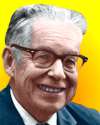 | A seismologist, born 26 Apr 1900, invented a scale that measures earthquake intensity (which he developed with his colleague, Beno Gutenberg), in the early 1930s. The scale assigns numerical ratings to the energy released by earthquakes, and is known by his name. What is the name of this scientist |
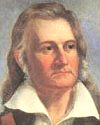 | John James Audubon, born 26 Apr 1785, was a French-American naturalist and artist who is famous for his drawings and paintings of animal life. He explored for his subjects following the Ohio and Mississippi Rivers and the Great Lakes. Finding no interested U.S. publisher, his engravings were made in London. Which type of animal is most frequently the subject in his art? |
| Deaths | |
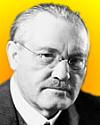 | Carl Bosch (1874-1940) was a German industrial chemist who co-developed the Haber-Bosch process. What is the product of the Haber-Bosch process? |
| Events | |
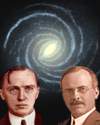 | On 26 Apr 1920, two leading astronomers—Harlow Shapley of the Mount Wilson Observatory and Heber D. Curtis of the Lick Observatory in California—debated each other at the Smithsonian Institution. They held opposite opinions as to whether the Milky Way Galaxy was the only galaxy in the universe, or one of many separate galaxies in the cosmos. By the end of the 1920s, the many galaxies theory was validated by Edwin Hubble. Which of these two scientists, at the time of the debate, believed in the Milky Way as the sole galaxy? |
Fast answers for the previous newsletter for April 25: Austria • Guglielmo Marconi • compass needles were affected by the aurora • the decade including the year 1983 • the decade including the year 1953 • the decade including the year 1961.
 If you enjoy this newsletter, the website, or wish to offer encouragement or ideas, please send feedback by using your mail reader Reply button.
If you enjoy this newsletter, the website, or wish to offer encouragement or ideas, please send feedback by using your mail reader Reply button. Your click on a Facebook, StumbleUpon, or other social button on the site webpages is also a welcome sign of appreciation. Thank you for using them.
© This newsletter is copyright 2020 by todayinsci.com. Please respect the Webmaster's wishes and do not put copies online of the Newsletter — or any Today in Science History webpage. (If you already have done so, please remove them. Thank you.) Offline use in education is encouraged such as a printout on a bulletin board, or projected for classroom viewing. Online, descriptive links to our pages are welcomed, as these will provide a reader with the most recent revisions, additions and/or corrections of a webpage. For any other copyright questions, please contact the Webmaster by using your mail reader Reply button.
--
If you do not want to receive any more newsletters, Unsubscribe
To update your preferences and to unsubscribe visit this link
Executive Real Estate Business Class
-
"It was like a man with wings. It wasn't like anything you'd see on TV or in a monster movie." ...
About the publisher
Search This Blog
Blog Archive
-
▼
2021
(585)
-
▼
April
(57)
- On This Day for April 30 - George Washington inaug...
- Newsletter for Friday 30 April.
- On This Day for April 29 - British royal wedding, ...
- Newsletter for Thursday 29 April.
- On This Day for April 28 - Benito Mussolini execut...
- Newsletter for Wednesday 28 April.
- On This Day for April 27 - Independence for Sierra...
- Newsletter for Tuesday 27 April.
- On This Day for April 26 - Chernobyl nuclear accid...
- Newsletter for Monday 26 April.
- On This Day for April 25 - Hubble Space Telescope ...
- See How They Tracked Down Bin Laden
- Newsletter for Sunday 25 April.
- On This Day for April 24 - Installation of Pope Be...
- Newsletter for Saturday 24 April.
- On This Day for April 23 - Voting for Eritrea's in...
- Earth Day Bonus: Become a Climate Action Expert
- On This Day for April 22 - First Earth Day, Miguel...
- On This Day for April 21 - French elections held, ...
- Newsletter for Wednesday 21 April.
- On This Day for April 20 - Explosion on the Deepwa...
- Newsletter for Tuesday 20 April.
- On This Day for April 19 - American Revolution beg...
- Newsletter for Monday 19 April.
- On This Day for April 18 - The midnight ride of Pa...
- Newsletter for Sunday 18 April.
- On This Day for April 17 - Canada Act proclaimed, ...
- Newsletter for Saturday 17 April.
- On This Day for April 16 - Harriet Quimby's flight...
- Newsletter for Friday 16 April.
- On This Day for April 15 - Sinking of the Titanic,...
- Newsletter for Thursday 15 April.
- On This Day for April 14 - Abraham Lincoln shot, J...
- On This Day for April 13 - Alfred Dreyfus imprison...
- Newsletter for Tuesday 13 April.
- On This Day for April 12 - Launch of first space s...
- Newsletter for Monday 12 April.
- John of Gaunt: father of England’s medieval monarchy
- On This Day for April 11 - Napoleon's abdication a...
- Newsletter for Sunday 11 April.
- On This Day for April 10 - Anschluss approved in A...
- On This Day for April 9 - Fall of Baghdad, Jørn Ut...
- Newsletter for Friday 9 April.
- On This Day for April 8 - Celebration of the Buddh...
- On This Day for April 7 - Jack Nicklaus's first Ma...
- Newsletter for Wednesday 7 April.
- On This Day for April 6 - Olympics revived, Raphae...
- On This Day for April 5 - Battle of Maipú, Colin P...
- The history and origins of Easter
- On This Day for April 4 - Martin Luther King, Jr.,...
- Newsletter for Sunday 4 April.
- On This Day for April 3 - Implementation of the Ma...
- Newsletter for Saturday 3 April.
- On This Day for April 2 - Death of Pope John Paul ...
- Newsletter for Friday 2 April.
- On This Day for April 1 - Creation of Nunavut, Ser...
- Newsletter for Thursday 1 April.
-
▼
April
(57)
-
Blogroll
-
About
HistoryFact










0 comments:
Post a Comment